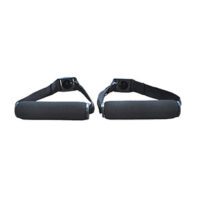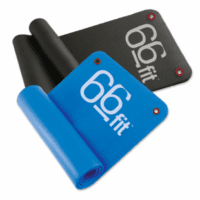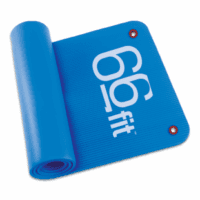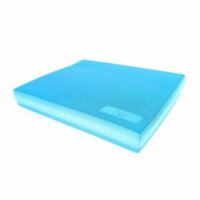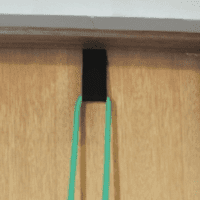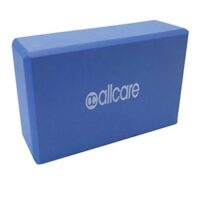Kids Sports Injuries
Article by John Miller
Kids Sports Injuries: A Comprehensive Guide for Parents and Coaches

Introduction
Kids sports injuries are a common concern for parents and coaches. Recent statistics reveal that 40% of sports injuries affect children, teenagers, and adolescents. These injuries fall into two categories: macrotrauma from a single traumatic event and microtrauma from repetitive overuse.
The Risks of Ignoring Kids Sports Injuries
Encouraging kids to ‘play through the pain’ can have serious consequences. Ignoring injuries can prolong recovery, complicate treatable conditions, and even cause permanent damage, potentially affecting future sports participation.
Accurate Diagnosis in Kids Sports Injuries
Physiotherapists and doctors emphasise the importance of detailed assessments for kids. Age, sex, and level of sports activity play crucial roles in diagnosing sports injuries. Information such as immediate symptoms, like a ‘pop’ sound, swelling, and the child’s training routine, is vital for an accurate diagnosis.
Differences Between Child and Adult Athletes
Children Are Still Growing
Young athletes are not just smaller versions of adults. Children’s bones, muscles, tendons, and ligaments are still developing, making them more prone to injuries. Additionally, children differ significantly from adults in terms of coordination, strength, and stamina.
Children Vary in Size and Maturity
Young athletes of the same age can vary greatly in size and physical maturity. Primary school children are less likely to experience severe injuries due to their smaller size and slower pace. However, high school athletes are larger, faster, stronger, and capable of exerting significant force in contact sports.
Children Can Injure Growth Plates
Growth plates, located at the ends of long bones, are areas of developing cartilage where bone growth occurs in children. These plates are weaker than the surrounding ligaments and tendons. An injury that might cause a sprain in an adult can result in a more serious growth plate fracture in a young athlete. Such injuries can potentially disrupt normal bone growth.
Common Types of Kids Sports Injuries
- Osgood-Schlatter Disease
Osgood-Schlatter Disease is common in growing adolescents, especially those active in sports. It causes pain and swelling just below the knee where the patellar tendon attaches to the shinbone. Physiotherapy can help manage symptoms through exercises and activity modification.
- Sinding-Larsen-Johansson Syndrome
Sinding-Larsen-Johansson Syndrome involves inflammation of the patellar tendon insertion at the bottom of the kneecap. It often affects children during growth spurts. Treatment includes rest, ice, and physiotherapy to strengthen the surrounding muscles and improve flexibility.
- Sever’s Disease
Sever’s Disease is an inflammation of the growth plate in the heel, commonly seen in active children. It causes heel pain, especially during physical activities. Physiotherapy focuses on stretching exercises, heel pads, and activity modification to alleviate symptoms.
- Osteochondritis Dissecans
Osteochondritis Dissecans occurs when a bone piece separates from its base, often affecting the knee, elbow, and ankle joints in kids. Early diagnosis and treatment, ranging from rest to surgery, are essential for recovery.
- Avulsion Fractures in Kids
Avulsion fractures happen when a bone fragment attached to a tendon or ligament is pulled from the main bone. Common in the pelvis, hip, elbow, and ankle, treatment involves active rest, ice, and rehabilitation exercises. In severe cases, surgery may be necessary.
- Overuse Injuries and Growth Plate Stress in Children
Repeated stress on a child’s growth plates can lead to pain and impaired growth. Preventing overuse injuries, such as stress fractures and tendinopathies, involves adequate rest and proper exercise management.
Parental and Coaching Tips for Preventing Kids Sports Injuries
- Encourage kids to play at a comfortable pace.
- Prioritise pre-season fitness and conditioning.
- Emphasise stretching, flexibility, and core stability.
- Ensure safe playing environments and proper equipment fit.
- Seek professional advice for any concerns.
Neck & Back Pain in Young Athletes
While neck pain is less common in kids, it can occur and should be assessed if persistent or severe. Youth back pain is quite common, and certain sports make kids vulnerable to spinal conditions that may evolve into a lifetime of potentially avoidable back pain. Poor posture, exacerbated by increased technology use and gaming, is also a growing concern.
Conclusion: Prioritising Kids’ Health in Sports
Managing kids sports injuries effectively is crucial for their long-term health and enjoyment of sports. Ignoring injuries can lead to serious consequences, but with proper care and prevention, kids can continue to enjoy their favourite activities safely.
What to Do for Kids Sports Injuries?
If your child experiences a sports-related injury or persistent discomfort, consult a physiotherapist or doctor. Professional advice and tailored treatment can prevent long-term issues. Visit PhysioWorks for professional guidance and to schedule an appointment with a physiotherapist to best manage a kids sports injury.
Rochedale - Call 38410277
Book Online: RochedaleSalisbury - Call 32751044
Book Online: SalisburySandgate - Call 32691122
Book Online: SandgateKids Sports Injuries FAQs
- What are the most common sports injuries in kids?
- The most common sports injuries in kids include sprains, strains, fractures, and growth plate injuries.
- How can parents help prevent sports injuries in children?
- Parents can help by ensuring proper conditioning, using appropriate gear, promoting flexibility and strength training, and ensuring adequate rest.
- What should be done immediately after a child sustains a sports injury?
- Apply ice, rest the injured area, and seek medical attention if necessary. Avoid letting the child continue playing.
- How do physiotherapists diagnose kids sports injuries?
- Physiotherapists assess factors such as age, activity level, symptoms, and injury history to diagnose sports injuries accurately.
- What treatments are available for kids sports injuries?
- Treatments range from rest and ice to physiotherapy exercises and, in severe cases, surgery.
- When should a child see a physiotherapist for a sports injury?
- A child should see a physiotherapist if they experience persistent pain, swelling, or any signs of a serious injury.
Related Articles
- Youth Leg Injuries: Understanding & Treatment Options – This article provides insights into common leg-related conditions in young individuals, covering a range of injuries from Osgood Schlatter’s Disease to Sever’s Disease, and offering guidance on treatment options.
- Avulsion Fracture Recovery: A Physio’s Guide – Offers a comprehensive guide on recovering from avulsion fractures, which are common in youths participating in sports, and discusses related injuries and conditions.
- Athletics Injuries: Comprehensive Physio Guide – This guide covers the prevention and care of various athletic injuries, including muscle strains and systemic conditions like fibromyalgia, providing a holistic view on management and recovery strategies.
- Prevent Football Injuries: Physiotherapist Tips & Strategies – Provides targeted advice for preventing football-related injuries in children, touching on common muscle injuries and recovery tips.
- Prehabilitation: Key To Injury-Free Sports Performance – Discusses the concept of prehabilitation to prevent injuries before they occur, focusing on muscle injuries and their management.
- Osgood-Schlatter Disease – A Detailed Guide – Dedicated to understanding Osgood-Schlatter Disease, a common condition affecting the knees of growing adolescents, this article elaborates on causes, symptoms, and treatment options.
- Growing Pains – A Physiotherapist’s Guide – Offers an in-depth look at common growth related in teenagers, emphasising prevention and treatment.
- Kids Back Pain – Get insights into managing and preventing back pain in kids.
- Kids Arm Pain – Learn about common arm pain conditions in children and their treatments.
- Kids Leg Pain – Discover the common sources of kids leg pain and what to do about their healthy growth.
- Kids’ Sports Injuries: Prevention and Treatment
- How to Prevent Sports Injuries in Children


























